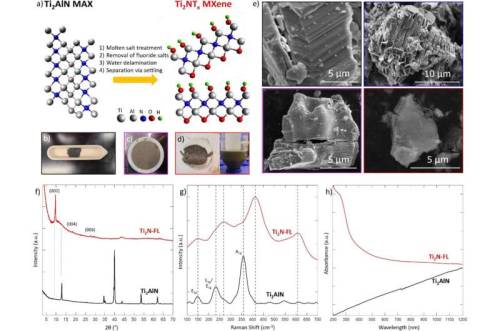#electrochemistry
Producing ammonia through electrochemical processes could reduce carbon dioxide emissions
Ammonia is commonly used in fertilizer because it has the highest nitrogen content of commercial fertilizers, making it essential for crop production. However, two carbon dioxide molecules are made for every molecule of ammonia produced, contributing to excess carbon dioxide in the atmosphere.
A team from the Artie McFerrin Department of Chemical Engineering at Texas A&M University consisting of Dr. Abdoulaye Djire, assistant professor, and graduate student Denis Johnson, has furthered a method to produce ammonia through electrochemical processes, helping to reduce carbon emissions. This research aims to replace the Haber-Bosch thermochemical process with an electrochemical process that is more sustainable and safer for the environment.
The researchers recently published their findings in Scientific Reports.
Since the early 1900s, the Haber-Bosch process has been used to produce ammonia. This process works by reacting atmospheric nitrogen with hydrogen gas. A downside of the Haber-Bosch process is that it requires high pressure and high temperature, leaving a large energy footprint. The method also requires hydrogen feedstock, which is derived from nonrenewable resources. It is not sustainable and has negative implications on the environment, expediting the need for new and environmentally friendly processes.
Post link
How simple liquids like water can perform complex calculations
After many decades of astonishing developments, advances in semiconductor-based computing are beginning to slow as transistors reach their physical limits in size and speed. However, the requirements for computing continue to grow, especially in artificial intelligence, where neural networks often have several millions of parameters. One solution to this problem is reservoir computing, and a team of researchers led by Osaka University, with colleagues from the University of Tokyo and Hokkaido University, have developed a simple system based on electrochemical reactions in Faradic current that they believe will jump-start developments in this field.
Reservoir computing is a relatively recent idea in computing. Instead of traditional binary programs run on semiconductor chips, the reactions of a nonlinear dynamical system—the reservoir—are used to perform much of the calculation. Various nonlinear dynamical systems from quantum processes to optical laser components have been considered as reservoirs. In this study, the researchers looked at the ionic conductance of electrochemical solutions.
Post link

Ex Libris Max Cremer
This bookplate belonged to Max Cremer, a German physiologist (1865–1935) and inventor of the glass electrode. The bookplate is in our 1922 volume of Zeitschrift für Elektrochemie und angewandte physikalische Chemie.


